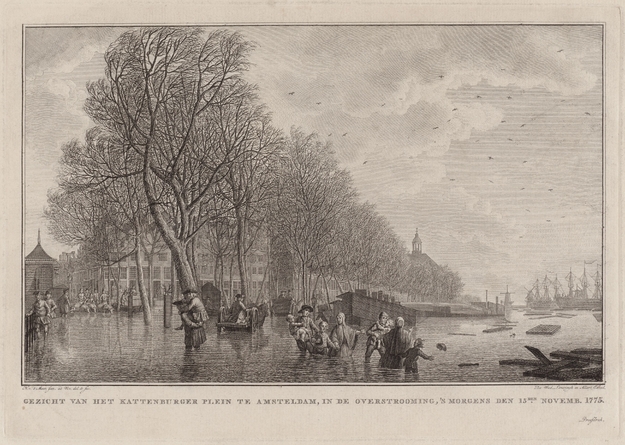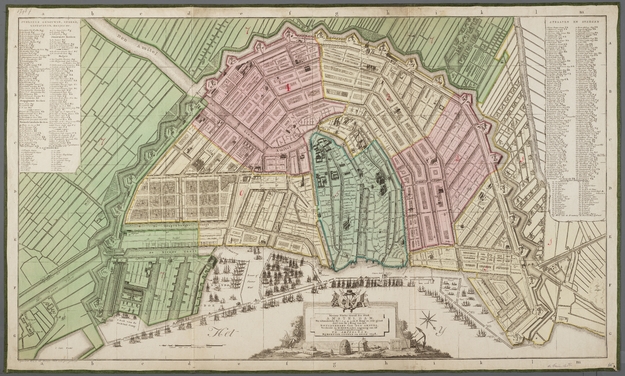Amsterdam was and is a city full of sounds, emotions, sights, and smells. Foul smells that made your stomach turn, or rather blossomy smells that remind strolling passers-by of spring. Amsterdam is a crowded port city that became rich because of its connection to the water. The city's main employer and source of income, the Dutch East India Company (VOC) was rapidly growing at the same time as the demand for more habitable space rose. The company decided to drain the water in the area of present-day Oosterdok to create new land, the "Oosterlijke Eilanden" (the Eastern Isles). In 1663, Kattenburg, Wittenburg, and Oostenburg ‘rose from the sea’. These islands and the life of its inhabitants were permeated with, and controlled by water: the livelihood of the inhabitants depended on the sea-trade of the VOC, but at the same time these islands were often confronted with floods. So, imagine an all-embracing smell of humidity and dampness. The moist smell of wood, iron, stone, and cloth and everything else getting wet. If we try to recreate the perfume of this watery area, 'water' will be the base note of the smell.
Even though, on a molecular level, (sea)water would be more of a middle note - in our representation of the Oosterdok as a perfume, it is our base tone since it is the main theme of Amsterdam’s smell-map. By analysing a variety of primary sources, like images and literary texts we aim to specify what exactly created the smell 'notes' and what elements each note consists of. As for the base note water, three compounds can be distinguished: its geographic location, the floods, and the groundwater.
As mentioned before, the three Eastern Isles ‘rose’ from the see in 1663. Its geographic location, then, is deeply embedded within the water environment. Kattenburg, Wittenburg, and Oostenburg are surrounded by water; the Eastern Islands lay within the estuary-turned-river IJ. Because of its direct connection to the sea, we can imagine the saltiness. The all-embracing smell of the briny sea. This is the first component of the base tone. The second layer of this base tone can perhaps be earthy tones mustiness, or moldiness of the water infiltrating the islands. This happened in two ways.
Firstly, the islands were often encumbered by floods. One of which is on 15th November 1775, when Kattenburgerplein was flooded. In fact, such a incident was captured in an etched print, as seen above. In the lower right corner we can see what seems to be a family. We also see a lot of things floating on the water. In the middle of the picture, at the bottom a man carries another man on his back to prevent him from getting wet. Yet, interestingly the flood is not depicted as a terrible event. The people in the picture seem the most distraught by the boy who loses his hat. Otherwise, it appears to be business as usual.
A second way the inhabitants of the Eastern Islands were confronted with water is the groundwater. Because of fluctuating water levels of the IJ, the water also ‘came from below’. You can see that the ground floor of the houses is accessed by stairs. Below the ground floor, there was a basement, that had to be built above water level. Some houses even had ‘floating basements’ which flooded on the groundwater. Imagine the dampness, mustiness, and moldiness of these basements. Only after 1871, these floods were managed by closing the IJ from the sea. But until then, the base tone, the very foundation of Oostenburg in a literal and conceptual way, consists of water in different ways. The briny sea air, and the mustiness of goods and houses because of the floods and the groundwater.
To reiterate, although the “Eau d’îles de l’Est” is a complex and multi-layered scent, it is the water that blends all smells together. Water surrounds and occasionally disrupts life in Amsterdam. Further, water plays a pivotal part of sustaining life in Amsterdam: whether by sustaining the physical life or by sustaining communication that propelled the Dutch as a nation. It is also the water that runs through the city like veins, rejuvenating each and every neighbourhood with a sense of liveliness. And so the “Eau d’îles de l’Est” becomes the perfume of a sea-bound people.

